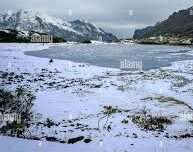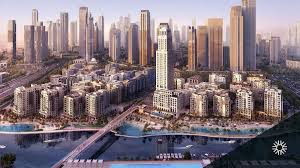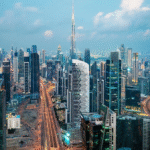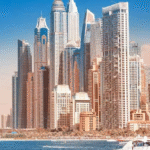Now Reading: Top 10 Emerging Neighborhoods in Dubai for Property Investment in 2025
-
01
Top 10 Emerging Neighborhoods in Dubai for Property Investment in 2025
Top 10 Emerging Neighborhoods in Dubai for Property Investment in 2025
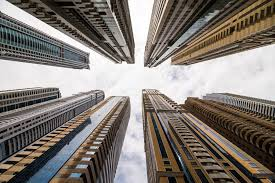
Table of Contents
Dubai’s real estate market in 2025 is thriving, driven by infrastructure advancements, economic stability, and investor-friendly policies like tax-free returns and Golden Visas. With a projected 6–9% price growth and rental yields of 5–10%, emerging neighborhoods offer affordability, high ROI, and long-term capital appreciation compared to premium areas like Downtown Dubai (AED 2.5 million median) or Palm Jumeirah (AED 4 million). Building on insights from Ajman’s affordable housing and Sharjah’s freehold zones, this response identifies Dubai’s top 10 emerging neighborhoods for property investment in 2025, detailing their appeal, ROI, and key projects, with comparisons to regional trends.
Top 10 Emerging Neighborhoods in Dubai for Property Investment (2025)
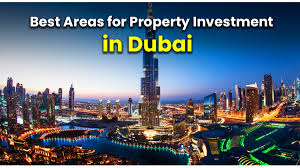
- Dubai South:
- Overview: Near Al Maktoum International Airport and Expo 2020 site, Dubai South is a logistics and residential hub with affordable housing and commercial spaces, per.
- Investment Appeal: Apartments (AED 600,000–900,000, 7–8% ROI), villas (AED 1.2–1.8 million, 6–7% ROI). 8–10% price growth due to metro expansion and District 2020, similar to Sharjah’s Tilal City, per.
- Key Projects: Residential City offers budget-friendly units; Damac Riverside features waterfront apartments, per.
- Why Invest: Strategic location, government-backed infrastructure, and affordability, akin to Ajman’s Al Helio 2.
- Jumeirah Village Circle (JVC):
- Overview: Family-friendly community with over 350 complexes, offering apartments, townhouses, and villas, per.
- Investment Appeal: Studios (AED 500,000–700,000, 8.38% ROI), villas (AED 1.5–2 million, 6–7% ROI). 6–8% price growth, driven by connectivity to Sheikh Zayed Road, per.
- Key Projects: Binghatti Corner provides affordable luxury apartments, per.
- Why Invest: High rental demand, competitive prices (30% below Downtown), and community amenities, similar to Sharjah’s Al Zahia.
- Dubai Creek Harbour:
- Overview: Emaar’s waterfront project with the upcoming Creek Tower, blending modern residences and cultural attractions, per.
- Investment Appeal: Apartments (AED 800,000–1.2 million, 6–7% ROI), townhouses (AED 1.8–2.5 million, 5–6% ROI). 7–9% price growth, per.
- Key Projects: Creek Palace offers high-end residences with skyline views.
- Why Invest: Future downtown potential, scenic views, and affordability compared to Dubai Marina, akin to Sharjah’s Maryam Island.
- Al Furjan:
- Overview: Mid-income residential hub near Expo City, offering villas, townhouses, and apartments with metro access, per.
- Investment Appeal: Apartments (AED 600,000–900,000, 7–8% ROI), villas (AED 1.5–2 million, 6–7% ROI). 6–8% price growth, per.
- Key Projects: Azizi Developments provide affordable off-plan units.
- Why Invest: Connectivity, family-friendly amenities, and value-driven pricing, similar to Ajman’s Al Nuaimiya.
- Arjan:
- Overview: Creative neighborhood near Dubai Miracle Garden, known for affordability and vibrant lifestyle, per.
- Investment Appeal: Studios (AED 500,000–700,000, 7–8% ROI), apartments (AED 800,000–1 million, 6–7% ROI). 6–7% price growth, per.
- Key Projects: Danube Properties offer smart-designed apartments with flexible plans.
- Why Invest: Proximity to tourist attractions, growing infrastructure, and high yields, akin to Sharjah’s Sharjah Sustainable City.
- Tilal Al Ghaf:
- Overview: Eco-friendly community by Majid Al Futtaim, featuring a central lagoon, schools, and sustainable homes, per.
- Investment Appeal: Townhouses (AED 1.8–2.5 million, 6–7% ROI), villas (AED 3–5 million, 5–6% ROI). 6–8% price growth, per.
- Key Projects: Harmony offers resort-style residences.
- Why Invest: Green living, family appeal, and self-sufficient amenities, mirroring Sharjah’s Sharjah Sustainable City.
- Mohammed Bin Rashid City (MBR City):
- Overview: Mixed-use development near Downtown Dubai, with luxury villas, apartments, and the Meydan One Mall, per.
- Investment Appeal: Apartments (AED 900,000–1.5 million, 6–7% ROI), villas (AED 2–4 million, 5–6% ROI). 7–9% price growth, per.
- Key Projects: Sobha Hartland features premium residences.
- Why Invest: Central location, high-end facilities, and long-term growth, similar to Abu Dhabi’s Saadiyat Island.
- Damac Lagoons:
- Overview: Resort-style community with themed clusters (e.g., Venice, Santorini), offering villas and townhouses, per.
- Investment Appeal: Townhouses (AED 1.5–2 million, 6–7% ROI), villas (AED 2–3 million, 5–6% ROI). 6–8% price growth.
- Key Projects: Portofino and Nice provide Mediterranean-inspired homes.
- Why Invest: Lifestyle appeal, competitive pricing, and rental demand, akin to Sharjah’s Aljada.
- Al Jaddaf:
- Overview: Strategically located near Downtown Dubai, with the upcoming Etihad Rail Station enhancing connectivity, per.
- Investment Appeal: Apartments (AED 700,000–1 million, 6–7% ROI). 7–9% price growth due to rail and airport links.
- Key Projects: Al Jaddaf Waterfront offers modern residences.
- Why Invest: Connectivity, affordability, and urban growth, similar to Sharjah’s Al Qasimia metro-driven appeal.
- The Valley:
- Overview: Emaar’s suburban community along Al Ain Road, designed for families with green spaces and adventure parks, per.
- Investment Appeal: Townhouses (AED 1.2–1.8 million, 6–7% ROI), villas (AED 2–3 million, 5–6% ROI). 6–7% price growth.
- Key Projects: Eden and Nara offer family-friendly homes.
- Why Invest: Affordable villas, community living, and proximity to Dubai South, akin to Ajman’s Al Rashidiya.
Investment Opportunities and Trends
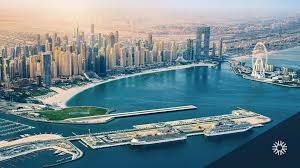
- Off-Plan Investments: Flexible payment plans (10% down, 56-month installments) in JVC, Al Furjan, and Dubai South ease entry, with 36% of properties selling above asking price, per. Similar to Ajman’s Al Ameera Village, per Affordable Housing in Ajman.
- High Rental Yields: Emerging areas offer 6–8.38% yields, outpacing global averages (3–5%), driven by expat and tourist demand, per. Comparable to Sharjah’s 4.26–9% yields.
- Infrastructure-Driven Growth: Metro expansions, Etihad Rail, and airport proximity boost Dubai South and Al Jaddaf, mirroring Sharjah’s transport-led appreciation (10–15%), per Impact of Infrastructure Projects.
- Sustainability Focus: Tilal Al Ghaf and Dubai South align with UAE Net Zero 2050, offering 15–20% utility savings, similar to Sharjah’s Sharjah Sustainable City, per Sharjah’s Freehold Zones.
- Golden Visa Eligibility: Investments above AED 2 million in MBR City or Tilal Al Ghaf qualify for 10-year residency, boosting FDI, akin to Sharjah’s 140% FDI surge.
Challenges and Considerations
- Market Volatility: Emerging areas like Arjan may face price fluctuations during downturns, per.
- Oversupply Risks: Simultaneous project completions in JVC or Al Furjan could temporarily soften prices, per.
- Rental Market Maturity: Areas like Dubai South may need time to establish strong rental demand, per.
- Tax Compliance: 9% corporate tax and eInvoicing require registration by March 31, 2025 (AED 10,000 penalty), per Sharjah’s Freehold Zones.
Recommendations
- Investment Strategy: Target off-plan apartments in JVC or Dubai South for 7–8% ROI. Consider villas in The Valley or Damac Lagoons for family-driven rentals.
- Due Diligence: Verify developer credentials and project timelines via Dubai Land Department (www.dubailand.gov.ae) or RERA.
- PropTech: Use Bayut, dubizzle, or PHOREE Real Estate for market insights, per.
- Tax Planning: Register via EmaraTax (www.tax.gov.ae); claim R&D credits for sustainable projects, consulting PwC Middle East.
- Monitor Trends: Track infrastructure updates via Dubai Roads and Transport Authority (www.rta.ae) and Emirates 24/7.
1. Dubai South
- Details: Apartments (AED 600,000–900,000, 7–8% ROI), villas (AED 1.2–1.8 million, 6–7% ROI). Near Al Maktoum Airport, Expo 2020.
- Growth: 8–10% price appreciation, metro expansion, District 2020.
- Projects: Residential City, Damac Riverside.
- Why: Affordable, strategic location, government support.
2. Jumeirah Village Circle (JVC)
- Details: Studios (AED,000,000–700,000, 8.38% ROI), villas (AED 1.5–2M, 6–7% ROI). Family-friendly, 350+ complexes.
- Growth: 6–8%, Sheikh Zayed Road access.
- Projects: Binghatti Corner.
- Why: High yields, affordability, community amenities.
3. Dubai Creek Harbour
- Details: Apartments (AED 800,–000–1.2M, 6–7% ROI), townhouses (AED 1.8–2.5M, 5–6% ROI). Emaar waterfront, Creek Tower.
- Growth: 7–9%, cultural hub.
- Projects: Creek Palace.
- Why: Future downtown, scenic views, value-driven.
4. Al Furjan
- Details: Apartments (AED 600,000–900,000, 7–8% ROI), villas (AED .5M–2M, 6–7% ROI). Near Metro, Expo City.
- Growth: 6–8%, family-oriented.
- Projects: Azizi Developments.
- Why: Connectivity, affordability.
5. Arjan
- Details: Studios (AED 00,000–700,000, 7–8% ROI), apartments (AED 800,000–1M, 6–7% ROI). Near Miracle Garden.
- Growth: 6–7%, vibrant lifestyle.
- Projects: Danube Properties.
- Why: Tourist appeal, high yields.
6. Tilal Al Ghaf
- Details: Townhouses (AED 1.8–2.5M, 6–7% ROI), villas (AED 3–5M, 5–6% ROI). Eco-friendly, lagoon.
- Growth: 6–8%, sustainable living.
- Projects: Harmony.
- Why: Green spaces, family appeal.
7. Mohammed Bin Rashid City (MBR City)
- Details: Apartments (AED 900,000–1.5M, 6–7% ROI), villas (AED 2–4M, 5–6% ROI). Near Downtown.
- Growth: 7–9%, luxury amenities.
- Projects: Sobha Hartland.
- Why: Central, high-end, long-term growth.
8. Damac Lagoons
- Details: Townhouses (AED 1.5–2M, 6–7% ROI), villas (AED 2–3M, 5–6% ROI). Resort-style, themed clusters.
- Growth: 6–8%, lifestyle appeal.
- Projects: Portofino, Nice.
- Why: Competitive pricing, unique design.
9. Al Jaddaf
- Details: Apartments (AED 700,000–1M, 6–7% ROI). Near Etihad Rail, Downtown.
- Growth: 7–9%, connectivity-driven.
- Projects: Al Jaddaf Waterfront.
- Why: Urban growth, affordability.
10. The Valley
- Details: Townhouses (AED 1.2M–1.8M, 6–7% ROI), villas (AED 2M–3M, 5–6% ROI). Emaar, family-friendly.
- Growth: 6–12% appreciation potential.
- Projects: Eden, Nara.
- Why: Suburban vibe, affordable villas.
Opportunities
- Off-Plan: Flexible plans in JVC, Al Furjan (10% down, 56-month terms).
- Yields: 6–8.38%, driven by expat demand.
- Infrastructure: Metro, Etihad Rail boost Dubai South, Al Jaddaf.
- Sustainability: Tilal Al Ghaf, Dubai South save 15–20% utilities.
- Visa: Golden Visa (>AED 2M) in MBR City, Tilal Al Ghaf.
Challenges
- Volatility: Price fluctuations in Arjan, JVC.
- Oversupply: Potential in JVC, Al Furjan.
- Rentals: Dubai South needs time to mature.
- Tax: 9% corporate tax, eInvoicing by March 31, 2025 (AED 10,000 penalty).
Recommendations
- Invest: Off-plan in JVC, Dubai South; villas in The Valley, Damac Lagoons.
- Verify: Developers, timelines via www.dubailand.gov.ae, RERA.
- PropTax: Use Bayut, dubizzle, PHOREE Real Estate.
- Tax: Register via EmaraTax; claim credits with PwC.
- Monitor: Infrastructure via www.rta.ae, Emirates24/7.
Conclusion
Dubai’s emerging neighborhoods—JVC, Dubai South, Dubai Creek Harbour, and others—offer 6–8.38% ROI and 6–10% price growth in 2025, driven by infrastructure, affordability, and sustainability. Compared to Ajman’s 9–11.71% yields or Sharjah’s 4.26–9%, Dubai balances value and luxury. Investors should target off-plan properties via Emaar or Damac, leverage Bayut, and ensure tax compliance by March 31, 2025, to maximize returns in this dynamic market.
WATCH MORE: https://www.youtube.com/watch?v=NsNZUV5wAMg
READ MORE: Sustainable Developments in Sharjah: Leading Projects in 2025



